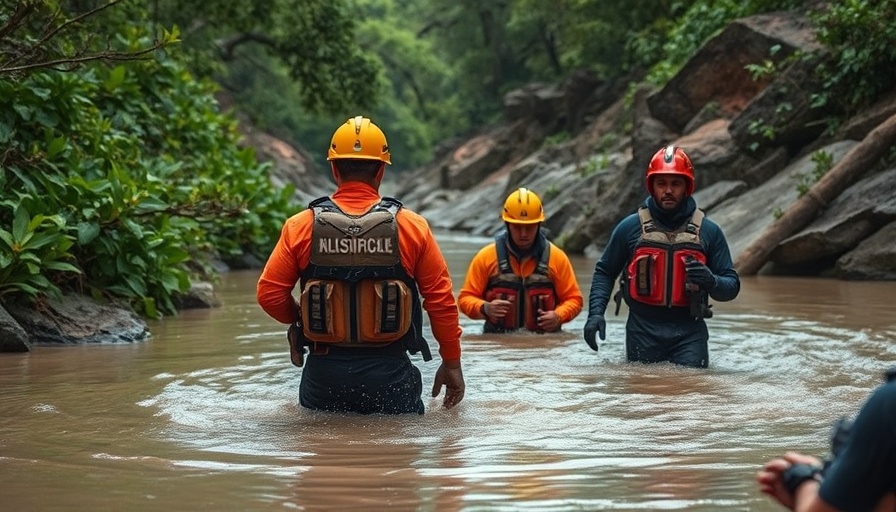
The Aftermath of Tragedy: San Antonio's Flooding Crisis
On June 12, 2025, San Antonio experienced what can only be described as a devastating natural disaster. Heavy storms unleashed record rainfall, leading to catastrophic flooding that has claimed the lives of 13 individuals, with the intensive search efforts finally concluding as all missing persons have been accounted for. In the wake of the tragedy, city officials are emphasizing the need for preparedness and community resilience in the face of increasingly severe weather events.
Understanding the Scale of the Disaster
The storms wrought havoc across the city, dumping between 3 to 8 inches of rain over a short period. This immense volume of water caused widespread flash flooding, sweeping away vehicles and stranding residents. The San Antonio Fire Department (SAFD) reported multiple rescues throughout the night and into the following days, showcasing the sheer scale of the emergency response required by local services.
Authorities have provided updates about the victims, revealing details that underscore the human impact of the disaster. Names of the deceased have been released, including those who were found clinging to trees a mile away from where they had entered the water. Such harrowing stories remind us of the real-life consequences of weather-related tragedies and emphasize the importance of response efforts and community support.
Support from First Responders and Community Engagement
San Antonio’s first responders have been commendably heroic, deploying specialized teams to assist in rescue operations. The urgent call for support from the Texas A&M Task Force 1 highlights the collaboration among various agencies to combat the flooding crisis. Mayor Ron Nirenberg has publicly acknowledged their sacrifices, asserting that the community stands united in mourning and recovery.
As we reflect on this crisis, it’s vital to consider how communities can come together in times of need. Local organizations and community members can play an essential role in providing shelter, food, and emotional support to those affected by the floods. This tragedy may serve as a reminder of the strength found in unity and the necessity of preparing for the unexpected.
Proactive Steps: Preparing for Future Storms
San Antonio’s recent experience doesn't exist in isolation. Weather experts and meteorologists have warned of the increasing frequency and intensity of storms globally, a result of climate change consequences becoming more apparent every year. This occurrence raises critical questions: What steps can be taken to prevent such loss of life in the future? How can communities better prepare for severe weather events?
Investments in infrastructure improvements, such as better drainage systems and early warning systems, can drastically reduce hazards posed by heavy rainfall. Additionally, community preparedness initiatives, including emergency plan drills, can foster a culture of safety and readiness.
Conclusion: A Path Forward
The tragedy in San Antonio serves as a poignant reminder of nature's power and the vulnerabilities that many communities face in the face of severe weather events. As residents begin the recovery process, it is essential to focus on reinforcing community bonds and improving systems that protect the public's safety. Awareness is the first step towards action, and fostering a proactive mindset will better equip residents for future weather-related challenges. May the community of San Antonio draw strength from this crisis and emerge more resilient than ever.
 Add Row
Add Row  Add
Add 




Write A Comment